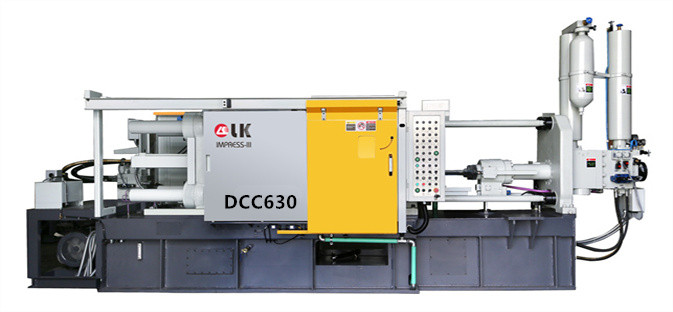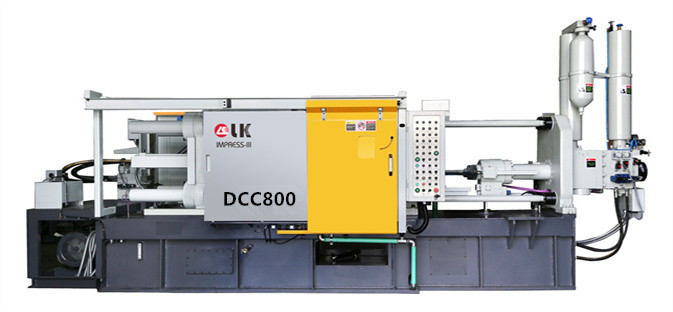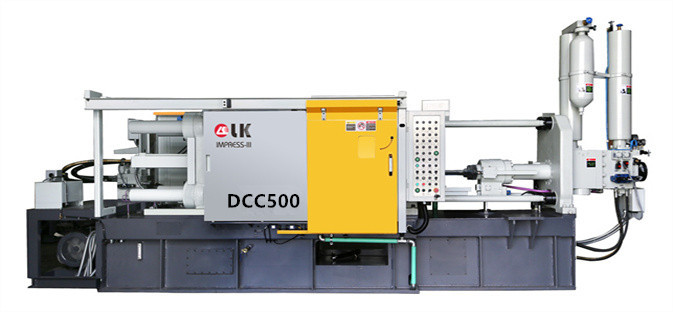Die-Casting Automation Surpasses Robots
LK Die Casting Machine / 2024-07-05 11:06:42
Introduction
In modern manufacturing, the application of automation technology has become the key to improving production efficiency and product quality.
Especially in the die-casting industry, the introduction of automation not only improves production speed but also significantly reduces the errors and risks of
manual operation.
However, with the continuous advancement of technology, die-casting automation is no longer limited to robot operation but is developing in a more intelligent and
comprehensive direction.
This article will explore how die-casting automation can surpass the limitations of traditional robots and bring more efficient and flexible solutions.

The current status of die-casting automation
Application of traditional robots
Robotic arm operation: In die-casting production lines, robotic arms are widely used for operations such as picking, assembly, and handling, which significantly
improves production efficiency and consistency.
Spraying robot: used for mold spraying to ensure uniform coating thickness, extend mold life, and improve product quality.
Detection robot: automatically detects product defects such as pores, cracks, etc., which improves the efficiency and accuracy of quality control.
Challenges faced by traditional robots
Lack of flexibility: Traditional robots are usually pre-programmed operations, and adjustments and reprogramming are complex and time-consuming when facing
different products and process changes.
Limited level of intelligence: Traditional robots lack autonomous learning and decision-making capabilities and cannot cope with complex production environments
and emergencies.
High cost: High-precision, high-performance robot equipment, and its high maintenance costs are a challenge for small and medium-sized enterprises.
Die-casting automation beyond traditional robots
1. Intelligent automation system
Adaptive control: Use sensors and real-time data analysis to automatically adjust die-casting parameters such as injection speed, pressure and temperature to
ensure the quality consistency of each casting.
Machine learning: Through machine learning algorithms, the system can learn optimization strategies from a large amount of production data and continuously improve
production efficiency and quality.
Autonomous decision-making: The intelligent system can automatically judge and handle problems that arise in the production process based on real-time monitoring
data, reducing manual intervention.
2. Collaborative robots (Cobot)
Human-machine collaboration: Collaborative robots can work safely with human workers and are suitable for processes that require flexible adjustment and operation,
improving the flexibility and efficiency of production lines.
Rapid deployment: Collaborative robots are easy to program and adjust, can quickly adapt to different production tasks, and reduce downtime.
Reduce costs: Compared with traditional industrial robots, collaborative robots have lower costs and are easy to maintain, suitable for various enterprise
applications.
3. Fully automated production line
Integrated system: Integrate automation equipment with a production management system to realize full process automation from raw material input, and die-casting
production to finished product inspection and packaging.
Real-time monitoring and optimization: Through the Internet of Things (IoT) technology, the status of each link of the production line is monitored in real-time,
and data analysis and optimization are carried out to improve overall production efficiency.
Flexible manufacturing: Through modular design and intelligent control, the production line can flexibly respond to the production needs of different products
and batches, and achieve rapid switching.

Key technologies for die-casting automation
Sensor technology
Pressure sensor: Monitor the pressure in the mold cavity to ensure the stability and accuracy of the injection process.
Temperature sensor: Real-time monitoring of the temperature of the mold and furnace to avoid product defects caused by overheating or uneven cooling.
Displacement sensor: Detect the movement position and speed of the robot arm and other automated equipment to ensure the accuracy and safety of the operation.
Data analysis and artificial intelligence
Big data analysis: By collecting and analyzing a large amount of production data, potential problems, and optimization opportunities are discovered to guide
production improvements.
Artificial intelligence algorithm: Use AI algorithms for predictive maintenance, quality control, and production optimization to improve the intelligence level of
the automation system.
Industrial Internet of Things (IIoT)
Equipment networking: Connect various types of equipment on the production line to the network to achieve real-time transmission and sharing of data.
Remote monitoring and maintenance: Remotely monitor and manage the production line through the cloud platform, timely discover and solve problems, and reduce
downtime.
Practical application cases of die-casting automation
Automotive parts manufacturing
Case analysis: An automotive parts manufacturer has achieved full-process automated production from raw material delivery to finished product delivery by
introducing an intelligent automation system.
Production efficiency has increased by 30% and the defective product rate has decreased by 50%.
Key technology: The system uses adaptive control, machine learning, and IoT technologies to achieve real-time monitoring and optimization of the production process.
Electronic product shell production
Case analysis: An electronic product manufacturer has achieved automation of high-precision, small-batch production lines by deploying collaborative robots. The
production line can be quickly adjusted according to order requirements, which improves flexibility and response speed.
Key technology: The combination of collaborative robots and flexible manufacturing systems enables production lines to quickly adapt to the production requirements
of different products.
Future development trends
1. Higher Intelligence
Autonomous learning and optimization: Future automation systems will be more intelligent, able to autonomously learn and optimize production processes, and improve
production efficiency and product quality.
2. Human-machine integration: Human-machine collaboration will be further deepened, and the autonomy of robots and the creativity of human workers will be better
combined.
3. Green Manufacturing
Energy saving and emission reduction: The application of automation technology will further promote the green development of die-casting processes, and achieve
sustainable manufacturing by optimizing energy use and reducing waste generation.
Environmentally friendly materials and processes: The use of environmentally friendly materials and processes reduces the impact on the environment, which is in
line with the future development direction of the manufacturing industry.
4. Full process digitalization
Digital twin technology: By establishing a virtual digital model of the production line, the actual production process can be accurately simulated and optimized to
improve production efficiency and quality.
Full life cycle management: Realize digital management of the entire life cycle from product design, production, and use to recycling, improve resource utilization
and reduce environmental impact.

Conclusion
Die-casting automation is transcending the limitations of traditional robots and developing in a more intelligent, flexible, and comprehensive direction.
By adopting intelligent automation systems, collaborative robots, and fully automated production lines, enterprises can greatly improve production efficiency,
product quality, and flexible manufacturing capabilities.
At the same time, with the continuous advancement of technology, die-casting automation will continue to promote the transformation of the manufacturing industry
and usher in a more efficient and sustainable development future.
It is hoped that this article can provide readers with valuable references in their exploration and application in the field of die-casting automation.
Contact LK Egypt to learn more info about the die-casting machine
LKAGENT OFFICE DCM
Address: Industry Zone, South of Port Said Kebly, Egypt
https://www.zazdiecasting.com/
Phone: +86 13598704163
Mobile: +20 101 304 3317 +20 150 181 8310
Email: jack@zazmae.com ahmedmahmoud@zazmae.com
#die cast tooling
#trivalent chromate
#rapid prototype casting
#a360 aluminum
#aluminum caster
#aluminum prototype
#ideal 55 slider parts
#density of aluminum kg/mm3
#magnesium sheet metal
#parts of a metal gate
#subcontracting of screw machining for the luxury sector
#wall aluminum
#die casting tooling
#tooling for die casting
#density of aluminium in kg mm3
#clear chromate
#es casting metals
#gating material
#prototype aluminum
#sigma castings
#subcontracting of screw-machining for household appliances
#we squeeze to please machine
#aluminium gravity die casting
#aluminum part
#aluminum rapid prototyping
#nickel casting
#plunger tip for die casting machine
#rapid prototyping aluminium
OTHER CONTENT
-

2024-09-19 14:16:15 LK Cold Chamber Die Casting Machine DCC900 Locking Force: 9000KN Die Height: 400-1000mm Space Between Tie Bars: 930x930mm Shot Weight: 13.5Kg Casting Area Max:2250c㎡
More -

2024-09-19 14:11:06 LK Cold Chamber Die Casting Machine DCC280 Locking Force: 2800KN Die Height: 250-650mm Space Between Tie Bars: 560x560mm Shot Weight: 2.9Kg Casting Area Max:700c㎡
More -

2024-09-19 10:23:07 LK Cold Chamber Die Casting Machine DCC580 Locking Force: 5000KN Die Heigh: 350-850mm Space Between Tie Bars: 760x760mm Shot Weight: 6.9Kg Casting Area Max:1250c㎡
More -

2024-09-19 10:11:20 LK Cold Chamber Die Casting Machine DCC400 Locking Force: 4000KN Die Height: 300-700mm Space Between Tie Bars: 669x669mm Shot Weight: 4.7Kg Casting Area Max:1000c㎡
More

